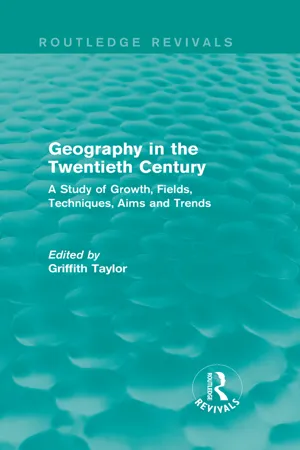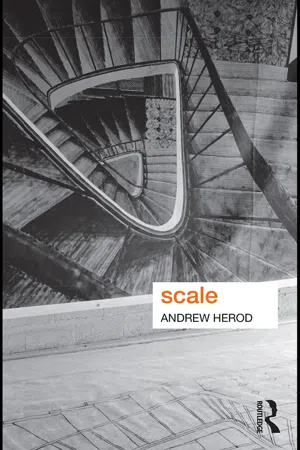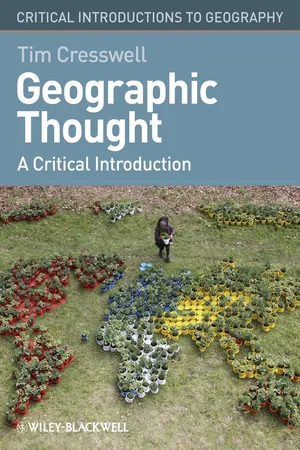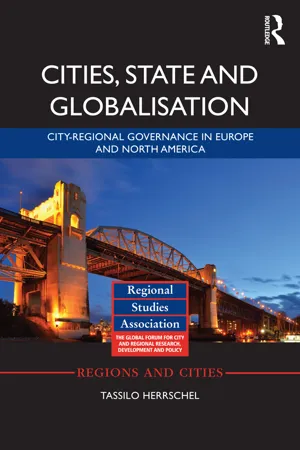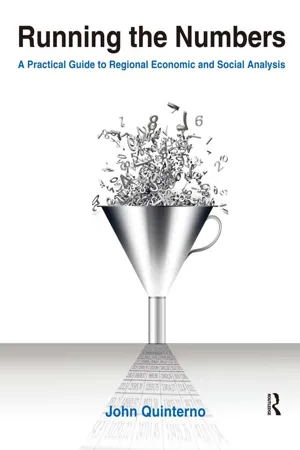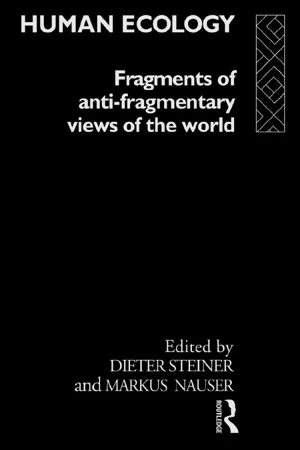Geography
Functional Regions
Functional regions are geographic areas defined by a specific function or activity that occurs within them. These regions are characterized by a central point or node from which the function radiates outwards, creating a network of interconnected activities. Examples include transportation hubs, economic trade areas, and communication networks.
Written by Perlego with AI-assistance
Related key terms
Related key terms
1 of 4
Related key terms
1 of 3
7 Key excerpts on "Functional Regions"
- eBook - ePub
Geography in the Twentieth Century
A Study of Growth, Fields, Techniques, Aims and Trends
- Griffith Taylor(Author)
- 2015(Publication Date)
- Routledge(Publisher)
As Stevens points out, a geographical region is the result of a synthesis of environmental and human factors. These factors are actually two aspects of the same thing. The geographer focuses attention on the synthesis in space—on the region: the sociologist on the synthesis in life—on the community. Since the community is a vital entity, it is dynamic, and has certain functions. Social geography studies the community in the region, and finds function and form more or less fused together in what he has come to call the functional region. It, too, helps to stamp an area as individual, and thus assists the geographer in creating what Hettner has called a science of areal differentiation of the earth surface. 1 1 Hettner, ‘Alfred: ‘Die Entwicklung der Géographie in 19 Jahrhundert’, Geog. Ztschr., 4, 1898, p. 320. It is perhaps at this point that geography and sociology come most closely together. The concept of the functional region was first of all a sociological one, and is now used in both disciplines. It was in 1915 that C. J. Galpin 2 produced his ‘Social Anatomy of an Agricultural Community’ in which he showed that each function in the community, whether banking, retail trade, education, or religion, had a characteristic pattern of its own. This pattern had a typical spatial distribution and institutional structure. 2 Galpin, C. J.: ‘Social Anatomy of an Agricultural Community’, University of Wisconsin Agricultural Experiment Station, Research Bulletin No. 34, Madison, 1915. The early contributions of geographers to community studies were based rather on physical control, or economic and technological influence, or historical changes, than on Functional Regions. Certainly, all these have played an important part, both in themselves, and in the way in which they have been worked into the functional concept. However, the classical study of communities was not in terms of functions, and functional patterns, but of general morphology, in relation to site and situation - nodal terms, wherein regional cores have dominance over particular hinterlands (Whittlesey 1954; Nystuen and Dacey 1961). Equally, whereas formal and vernacular regions have typically been viewed in areal terms, with the region’s border conceived of as a spatial circumscriber of more or less homogeneous spaces, functional and nodal regions have often been seen in networked terms as the product of interlinked social or natural relationships that criss-cross the landscape, though the two are not reducible to each other – as Symanski and Newman (1973: 350) note, “though nodal regions can be considered functional, Functional Regions, without further specification, cannot be considered nodal.” Thus, whilst Functional Regions may be represented pictorially in areal terms for purposes of exposition, they are primarily understood in terms of the relationship between a core point and outlying nodes, all of which are linked through linear connections – for instance, the rail lines that connect a central city with the outlying suburbs to form a functional region can be thought of as forming a kind of skeletal frame over which the space of the region is draped.In this context, this chapter traces the history of developments in the concept of the region as it has been employed within Geography. Although the chapter initially addresses developments in late nineteenth-century French and German Regional Geography, its primary focus is how understandings of the region have advanced in Anglo-American Geography. The chapter itself is broken into four main sections. The first outlines the growth of interest in regions in early twentieth-century Geography, especially as it emerged from the shadow of environmental determinism. In particular, it traces efforts to develop so-called “natural regions” and how humans were subsequently incorporated into con-siderations of regions. The second section explores how the regional scale was conceived of during the mid-century period when attention shifted to regions’ human aspects, whereas the third recounts how the region was theorized during the so-called Quantitative Revolution of the 1950s–1970s. In the fourth section I cover efforts in the 1980s to develop a “Reconstructed Regional Geography” wherein a Marxist view of regions as material entities – in stark contrast to the Kantian idealist notion of regions as mental constructions – came to prominence. Finally, I make some broader observations concerning how narrative is structured and how this shapes our conceptualization of the world, and what this means for thinking about both regions and the way in which the intellectual history of Geography is often presented.
- eBook - ePub
- Cynthia Metcalf, Rhonda Atkinson, Rhonda Atkinson(Authors)
- 2017(Publication Date)
- Research & Education Association(Publisher)
They are often defined by governmental or administrative boundaries (i.e., United States, Jacksonville, Brazil). However, formal regions can show other characteristics. For example, a climate region is a formal region because it links places that share a climate. The places on a map that shows where a specific language is spoken make up a formal region because they share the feature of a common language. • Functional Regions (sometimes referred to as nodal regions) are linked together by some function’s influence on them. However, if the function ceases to exist, the region no longer exists. Functional Regions are created through the movement of some phenomenon, like a disease; or a perceived interaction among places, like pizza delivery routes. For example, a functional region might appear on a map of Delta Airlines’ flights from Atlanta, Georgia. A mapmaker would plot all the places to which Delta travels from its hub in Atlanta, the node. Then the mapmaker would draw a boundary enclosing all of those places into one functional region. The area affected by the spread of a flu epidemic is another example of a functional region. Functional Regions are defined by the places affected by the movement of some phenomenon from its source, or from the node of other places. • Vernacular regions are those loosely defined by people’s perception (e.g., the South, the Middle East). The boundaries of a perceptual region are determined by people’s beliefs, not a scientifically measurable process. For example, the space in which the “cool kids” sit at lunch would be a perceptual region because its boundaries are totally determined by the region maker’s perception of who is cool and who is not—something that could be debated by any other person in the room. Another example of a perceptual region is the American South - eBook - ePub
Geographic Thought
A Critical Introduction
- Tim Cresswell(Author)
- 2012(Publication Date)
- Wiley-Blackwell(Publisher)
Chapter 4 Thinking About Regions The regional concept constitutes the core of geography. This concept holds that the face of the earth can be marked off into areas of distinctive character; and that the complex patterns and associations of phenomena in particular places possess a legible meaning as an ensemble which, added to the meanings derived from a study of all the parts and processes separately, provides additional perspective and additional depth of understanding. This focus of attention on particular places for the purpose of seeking a more complete understanding of the face of the earth has been the continuous, unbroken theme of geographic study through the ages. (James 1929: 195) Two questions have motivated geographical thinking over the past 2,000 years more than any other. These are “what is the connection between the human and physical worlds?” and “how can we account for spatial difference?” The second of these questions lay at the heart of what Varenius called “special geography” with its focus on particular areas of the earth’s surface and the qualities that make these areas different and unique from the areas around them. It is this line of enquiry that lies at the heart of human geography over the first half of the twentieth century. The concept that exemplifies this pursuit is “region.” At first glance the idea of a region seems a fairly vague one. It might, for instance, be thought of as a synonym for “area.” One question that immediately arises is at what scale a region exists. As a word that is used in everyday speech it most often suggests a subdivision of something bigger. Regional art, for instance, signifies artistic practices, styles, and products that are associated with a particular bit of a nation – say the Midwest of the United States. But we would be unlikely to label a national art form regional even if a nation is part of a larger continental or global whole - eBook - ePub
Cities, State and Globalisation
City-Regional Governance in Europe and North America
- Tassilo Herrschel(Author)
- 2014(Publication Date)
- Routledge(Publisher)
of the region. But city-regions do not necessarily contain merely one dominant central city as a mono-centric arrangement (see Herrschel and Newman 2002), but could instead possess two or more cities functioning as a cluster of bi- or poly-polar centrality respectively (Welsh Government 2012: 9). This difference in centrality matters for any likely intra-local competition within the ‘shared’ region, which, in turn, shapes the nature and scope of internal negotiations about common policy agendas as drivers of a regional perspective, because of a latent distrust about the commitment of individual localities to any joint approach.Yet, all these various functions have a common reference to the central city as shared, unifying denominator, and it is this ‘functional association’ that circumscribes the city-region as a pragmatic, tailor-made project. As such, as he further elaborates, city-regions are inherently ‘mental constructs’, rather than ‘as some planners and scholars seem to think, an area which can be presented on a platter to suit their general needs’ (Dickinson 1972: 54), and these include an area’s administrative and governmental, as well as organisational interests. ‘The extent of the area they need will depend on the specific purpose for which it is required’ (54), and the related specifically formed relationships and connections between city and surrounding region. Despite this variety, Dickinson (1972) identifies four key functional types: (1) ‘trade area relations’ as measurement of functional economic linkages; (2) ‘social relations’ (including education and culture); (3) ‘movement of population’ as expression of commuting links; and (4) ‘land use effects’ of the central city on the surrounding areas, e.g. suburbanisation. This variety makes attempts at measuring and clearly bounding the geographic extent of such city-regions difficult, and with it the assemblage of required clearly demarcated, ‘matching’ administrative territories. Any such attempts to instrumentalise an inherently fluid relational interdependence between city and surrounding region is prone to inevitable imprecision. Nevertheless, attempts have been made, such as in the USA with the introduction of the SMSAs in the 1950s, and are still being made with definitions of ‘city-region’ by the OECD and the European Commission (EC 2011), because any state involvement requires clearly defined territorial boundaries for the application of powers and policies. Yet, as Hawley (1963) observes: ‘The application of indexes thus far brought into use [however] reveals that the boundaries of modern community, instead of precise lines, are blurred, if not indeterminate.’ Different indices produce different descriptions of a community’s spatiality, ultimately resulting in a confusing array of intertwined lines as imprecise boundaries. Defining ‘matching’ territories of governmental power and responsibility to capture these spaces will thus be inherently difficult. Not only are they different in shape and reach, but they also change over time. But is such ‘catching up’ with functional spatialisation really needed? Alternative ways of linking the two exist in the form of inter-municipal alliance building and co-operation with multiple ways and varying degrees of formalisation, as discussed below in Chapter 5 - eBook - ePub
Running the Numbers: A Practical Guide to Regional Economic and Social Analysis: 2014
A Practical Guide to Regional Economic and Social Analysis
- John Quinterno(Author)
- 2014(Publication Date)
- Routledge(Publisher)
4Few residents of the Research Triangle would deny that it is a region of some sort, but many would contest its boundaries and its degree of interconnectedness. The Research Triangle nevertheless is a region in that it is “an area within the national economy that is sufficiently comprehensive in structure that it can function independently, although of course in most practical circumstances it has strong links with the rest of the economy.”5 Yet even that definition is vague, and in response, observers tend to view regions from one of three perspectives: territorial, functional, or administrative.Before describing each perspective, it is important to acknowledge that each one is more complex than its description implies. An exhaustive account is beyond this book’s scope, and the intention here is to provide a basic orientation to common ways of understanding regions. In practice, most regional studies blend the functional and administrative perspectives for reasons of feasibility and because civic leaders tend to think in terms of administrative structures. The exact mix of perspectives, however, hinges on the particular research questions and the availability of pertinent data.TERRITORIAL PERSPECTIVEThe territorial perspective envisions a region as a “historically evolved, contiguous society that possesses a physical environment, a socioeconomic, political, and cultural milieu, and a spatial structure distinct from the other major territorial units, city, and nation.”6 The strength of this view is its recognition of the interplay between the physical environment and social dynamics. Regions are not simply discrete physical spaces, but rather the intricate products of economic and social interactions. Economic factors are particularly important in differentiating regions, as evidenced in the journalist Tom Wolfe’s observation about how when traveling by road in the United States “the only way you could tell you were leaving one community and entering another was when the franchises started repeating, and you spotted another 7-Eleven, another Wendy’s, another Costco, another Home Depot.”7 - eBook - ePub
- Markus Nauser, Dieter Steiner(Authors)
- 2002(Publication Date)
- Routledge(Publisher)
Part IVTHE REGIONAL DIMENSION
Passage contains an image
17INTRODUCTION TO PART IV
1 REGIONAL GEOGRAPHY: OLD AND NEW
Any concrete investigation of human ecological situations is connected to regional contexts. Similar to human ecology at large, there is a traditional background to the study of regions on the one hand and a response-to-crisis aspect on the other. To consider the tradition first, the concern with regions and also boundaries between regions has, of course, been the explicit homeground of geographers for a long time. Until the middle of this century, the philosophy of geography had been one of treating regions as complexes of interrelated phenomena having, in a way, the status of individuals. Then this orientation came under attack by the ‘quantitative revolutionaries’ who declared the notions of individuality and (total) interrelatedness to be unscientific. Consequently, they established what has become known as ‘spatial analysis’, which amounted to a search for laws (or at least regularities) analytically describable by the fundamentals of location and movement in space (and time).1 The new geography had one thing in common with the old one, however: it restricted its view to phenomena of the biophysical (natural as well as human-made) environment. Consequently, the models of spatial analysis were largely devoid of any content in the psychological, social and also (human) ecological sense. Spatial analysis meanwhile has lost its status as the core of geography, but has managed to survive in joining forces with branches of economy, political science etc., to form what is known as ‘regional science’, an orientation which indulges in a kind of mathematical model Platonism.2 The development of a new kind of regional geography can be seen as the result of at least three factors.First, geographers, noting the ever-increasing rapidity of change of cultural landscapes, have found that they no longer can be content with simply registering the succession of land uses. They have concluded that they should be looking at human action and the societal forces responsible for this change (cf. Werlen, this volume). Consequently, a number of variants of ‘psychological’ and/or ‘social geography’ have developed since the seventies (see, for example, Johnston 1986). This carries over to the new regional geography which tries ‘to show how the specificity of place is preserved and modified within the generality of social change’ (Gilbert 1988:218, quoted in Taylor 1991:186).
Index pages curate the most relevant extracts from our library of academic textbooks. They’ve been created using an in-house natural language model (NLM), each adding context and meaning to key research topics.
Explore more topic indexes
Explore more topic indexes
1 of 6
Explore more topic indexes
1 of 4
